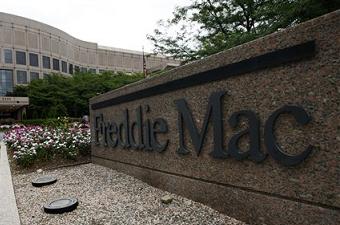As institutional investor activity continues in California, PropertyRadar decided to take a look at who these investors are and their purchase patterns. To rule out smaller and individual investors, PropertyRadar tracked transfers in qualities greater than 10 from an LLC or LP. The firm reported LLC and LP purchases represented only 5.1 percent of transfer activity in 2012 and 4.5 percent in 2013. However, upon closer examination, PropertyRadar found institutional investor activity was mainly concentrated in certain counties.
Read More »DAL to Act as Consultant for Asset Management Specialists
Distressed Asset Logistics (DAL), a firm that works with banks, credit unions, mortgage banks and asset management firms to streamline default services and REO activities within the enterprise, announced it will serve as a consultant to Asset Management Specialists (AMS), one of the nation’s largest asset management companies.
Read More »Clear Title Hires Chief Title Office for Commercial Division
Clear Title Agency of Arizona selected Scott Pearson to join the fast-growing title and escrow company as chief title officer. Pearson will lead the commercial escrow division and focus on new growth. Before joining Clear Title, he served as state manager at RedVision Systems in Arizona.
Read More »Survey: Distressed Sales Fall, Investors Increase Short Sale Activity
In April, the share of sales involving foreclosures and short sales maintained their downward path, falling to the lowest level since 2009, according to the Campbell/Inside Mortgage Finance HousingPulse Tracking survey. Using a three-month moving average, the survey found distressed sales accounted for 33 percent of home purchases in April, a decrease from 35.6 percent in March and 43.6 percent in April 2012. As expected, investor activity also slowed during the same time period.
Read More »Freddie Mac Begins Securitizing Modified, Performing Loans
Freddie Mac is in the process of securitizing over $1 billion in performing loans that were modified. The modified loans have been performing for at least six consecutive months and were held in the company's mortgage portfolio. ""Securitizing loans that have been modified and are now performing will allow Freddie Mac to better manage its mortgage-related investments portfolio,"" said Adama Kah, Freddie Mac VP of distressed assets management.
Read More »StreetLinks Lender Solutions Unveils AppraiserPlus Program
StreetLinks Lender Solutions announced the launch of AppraiserPlus program, which it says will allow appraisers to work more efficiently and receive payments the same day properties are inspected.
Read More »Greystone Hires Director for Affordable Housing Preservation Group
Greystone, a financial services and real estate firm, added Andrew Warren as director of investments for the firm's affordable housing preservation division.
Read More »Fixed Rates Rise Again
Fixed mortgage rates trended higher for the third consecutive week, according to reports from Freddie Mac and Bankrate.com. According to Freddie Mac's Primary Mortgage Market Survey, the 30-year fixed-rate mortgage (FRM) averaged 3.59 percent (0.7 point) for the week ending May 23, up from 3.51 percent the previous week. The 15-year FRM was also up, averaging 2.77 percent (0.7 point) from 2.69 percent previously.
Read More »Millions of Above-Water Borrowers Lack Enough Equity to Move
According to Zillow, the national negative equity rate was 25.4 percent in the last quarter compared to 27.5 percent at the end of 2012. That percentage represents slightly more than 13 million homeowners with a mortgage, Zillow said. However, when including homeowners with less than 20 percent home equity, the ""effective"" negative equity rate climbs to 43.6 percent, or a total of 22.3 million homeowners. Zillow explained that these homeowners likely can't afford a down payment for a new home, tying them to their current homes and exacerbating the inventory shortage.
Read More »Income, Transactions Improve for Commercial Realtors
The National Association of Realtors (NAR) reported members who practice commercial real estate saw median income rise to the highest level since 2008, reflecting progress in the commercial sector. In 2012, commercial Realtors reported a median annual income of $90,200 in 2012, up from $86,000 in 2011, according to NAR's 2012 Commercial Member Profile. Among NAR members in commercial real estate, brokers and appraisers brought in the highest income last year, and sales agents reported the lowest. Most members--60 percent--were brokers, while 25 percent were sales agents.
Read More »
 DSNews The homepage of the servicing industry
DSNews The homepage of the servicing industry








